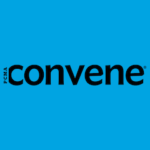
Offering a variety of ways to deliver conference education — instead of relying on “the-sage-on-the-stage” format — meets the evolving expectations of participants. Your attendees can get great content online. They’re coming to your face-to-face event for an engaging experience and unique opportunities to network.
Here are three easy-to-implement session formats that will add some much-needed interactivity to your next event:
1. Fireside chats — Many subject-matter experts who possess vast knowledge and experience in their field often lack the skills to be a solo presenter — but that doesn’t mean that they can’t shine at your event. “If a meeting is going to involve a poor speaker, the impact must be mitigated in advance,” Mike van der Vijver, founder of the MindMeeting consultancy, said in a Genioso Event Magazine article. “You have to ask what is the most effective way for this person to deliver their content and look for an alternative.”
Fireside chats that simulate a natural conversation between two people offer one such alternative. At the SaaStr Annual conference, which wrapped up in San Francisco, Feb. 9–11, solo presentations were ditched altogether, replaced by onstage interviews with speakers instead.
2. Interactive panel discussions — Panel discussions used to be the way to change up a program of solo presentations, but they’ve become a stale conference standard. Here’s where technology and a few moderator tricks can reengage the audience.
Involve your audience early, ideally “within the first five minutes,” Innovation Leader editor and experienced moderator Scott Kirsner writes in a Harvard Business Review post on best practices for moderating a panel.
That could be as easy as asking them to raise their hands in response to a question at the start of the session — or you could use technology to kick it up a notch. At the Mindfulness in Schools Project Conference 2016, Jan. 22, in London, moderator Sir Anthony Seldon used the interactive technology platform sli.do to crowdsource audience questions during the “Why Bother? Teachers & Pupils Tell their Stories” panel session. He included the audience in the discussion as soon as the brief introductions and the opening questions were over. The result? There were 54 questions and more than 250 likes during the 45-minute session.
3. The World Café session format — These small-group sessions tap into collective knowledge and enable people to exchange their experience and perspectives with each other. A facilitator usually takes 10-15 minutes to outline a focus or issue and then poses a single open-ended question that people discuss in groups of four to five for 45 minutes. Other options include having participants change tables every 15 minutes to increase the number of people they interact with and learn from, and assigning a different topic to each table. Participants can choose the topic that speaks most to them.



